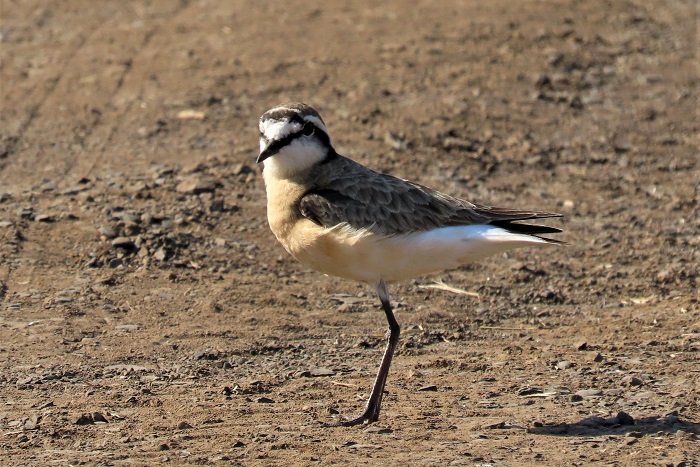Cover image by Malcolm Robinson – Albert Falls Nature Reserve, KwaZulu-Natal – BirdPix No. 261565
Identification
Kittlitz’s Plover is one of the smaller plover species with separate breeding and non-breeding plumage. The sexes are similar and differ only slightly in breeding plumage with females having a narrower black bar across the forehead and a marginally paler breast.

Suiderstrand, L’Agulhas, Western Cape
Photo by Tino Herselman
Breeding birds have distinctively patterned heads. They have a white forehead with black lores and a black frontal bar across the forehead. This frontal bar is separated from the dusky-brown crown by a narrow white line. There is a further black band that runs from each eye, down the sides of the neck and around to join on the hind neck. The supercilium is white and broad, extending from above the eye and reaching around the head to form a white collar. The rest of the upper parts are sooty-brown with pale, sandy feather margins. The chin and upper throat are white and the breast and upper belly range in colour from pale buff, to yellowish-brown, to pale chestnut, fading to white on the lower belly and flanks.

Gupta Dam, North West
Photo by Tony Archer
Non-breeding birds lack the black head markings which are instead replaced with sooty-brown, and they have a buffy-yellow supercilium and collar. The underparts are also paler and less extensively buff.
Regardless of season the bill and legs are black (legs can have a greenish hue) and the eyes are dark brown.
Juveniles resemble the non-breeding adults but are paler and have less defined head markings.
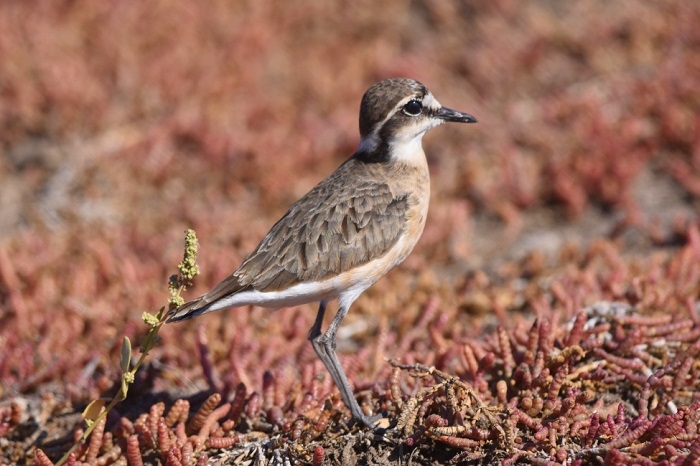
Near Klipheuwel, Western Cape
Photo by Gerald Wingate
Kittlitz’s Plover could be mistaken for other small plover species, especially in non-breeding plumage but the combination of greenish-black legs and pale nuchal collar distinguish it from all but the White-fronted Plover (Charadrius marginatus). The White-fronted Plover lacks the distinctive black-and-white head markings, and has dark shoulder patches. Non-breeding and juvenile White-fronted Plovers have white, not buffy, nuchal collars.
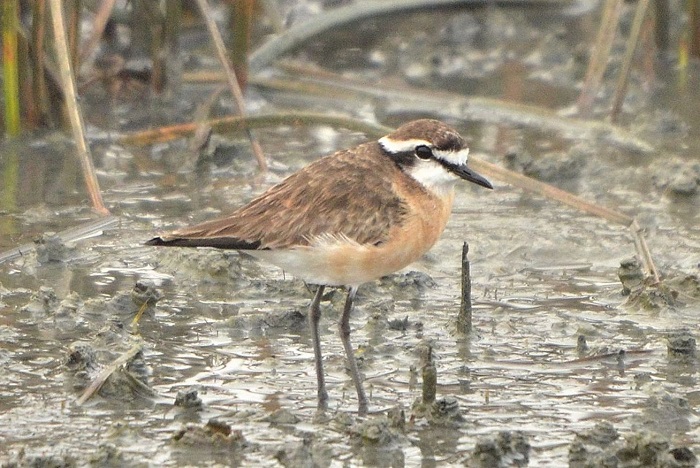
West Coast National Park, Western Cape
Photo by John Todd
Status and Distribution
The Kittlitz’s Plover is a locally common resident, local nomad and intra-African migrant. Its movements, however, are poorly understood.
It occurs from the delta of the Nile River southwards, throughout sub-Saharan Africa and Madagascar. It is only absent from the equatorial rain forests. It is widespread in southern Africa but is scarce in the arid regions of Botswana, Namibia and the north-western parts of the Northern Cape province. In these areas it is restricted to ephemeral or seasonal pans.

Away from the coast, Kittlitz’s Plover was historically restricted to natural pans and floodplains, but the construction of dams has enabled it to expand its range and increase its numbers substantially. It is not considered threatened.
Habitat
Kittlitz’s Plover favours open habitats with wet or dry mud or sand, and short vegetation, usually close to water.

Photo by Ryan Tippett
Along the coast it occurs at estuaries, salt-marshes and seaweed-strewn beaches. Inland it inhabits natural pans and river flood plains and has adapted well to artificial water bodies, including farm dams, sewage works and commercial saltpans. It occurs less often on airfields, golf courses, overgrazed pastures and ploughed fields. For breeding, Kittlitz’s Plover prefers waterbodies with wide, gently sloping, and exposed shorelines. It avoids mountainous regions, forest and other well wooded habitats.
Along the coast, birds move onto estuarine mudflats during winter, possibly because of reduced competition from Palaearctic migrants, but possibly also to avoid harsh interior winters and associated food shortages.
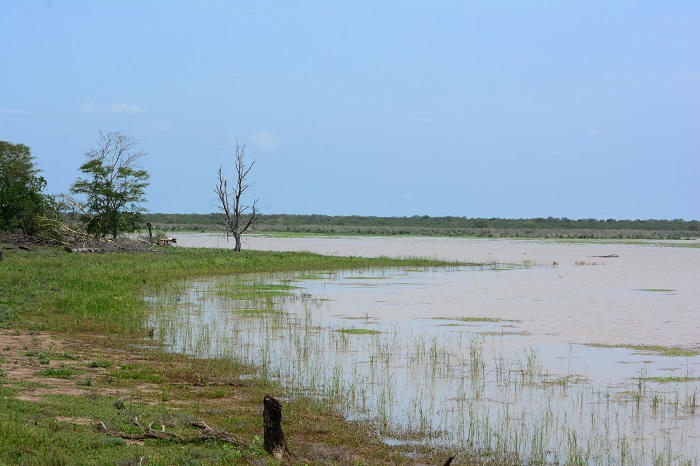
Photo by Ryan Tippett
Behaviour
During the non-breeding season Kittlitz’s Plover is usually found in groups of 2 to 5 birds but flocks can occasionally number into the hundreds. Roosts communally at night on wide, bare and open shorelines. They often roost in a hoof print or other similar hollow. They sometimes roost in mixed flocks with White-fronted, Common Ringed and Three-banded Plovers.

Grootvlei Dam, KwaZulu-Natal
Photo by Colin Summersgill
Kittlitz’s Plover locates food visually, foraging in the typical plover ‘run-stop-start’ manner. It feeds both day and night, and often forages in mixed-species flocks with other small waders. It is aggressive towards conspecifics and other species with similar diets such as the Curlew Sandpiper and Common Ringed Plover, but is also chased by other larger wader species like the Grey Plover, Blacksmith Lapwing and White-fronted Plover.
The diet of Kittlitz’s Plover consists of small terrestrial and marine invertebrates. These include small beetles, crickets, insect larvae, spiders, bristle worms, molluscs, crabs and other crustaceans, and occasionally seeds.
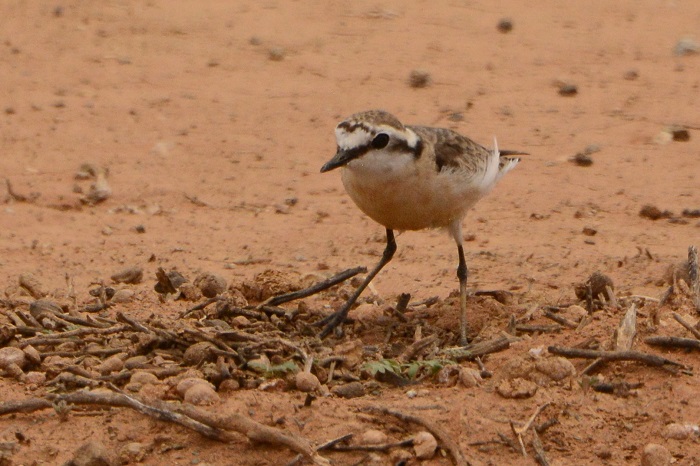
Vosburg district, Northern Cape
Photo by Ryan Tippett
Breeding occurs at various times across southern Africa. In the winter rainfall region breeding takes place after the rains from August through to March with an October to January peak. In the rest of southern Africa they breed opportunistically throughout the year with a distinct peak from July to October prior to the start of the summer rains.

Rooisand Nature Reserve, Western Cape
Photo by Johan Heyns
Kittlitz’s Plovers are monogamous and territorial. Initial courtship and pair formation takes place 3 to 4 weeks before the pair establishes a breeding territory. They nest solitarily or in loose groups. Males are responsible for maintaining territories which they only defend during the day.
The nest is a simple scrape in bare, dry ground, or sometimes on a raised mound. The nest scrape is left bare or variably lined with sand, pebbles, mud, shell pieces, animal dung or fragments of vegetation. 1 to 3 eggs are laid per clutch. and eggs are laid at 1 or 2 day intervals. The eggs are buff coloured with variable dark brown or black mottling. Incubation begins upon clutch completion and lasts from 22 to 28 days. Incubation duties are shared by both sexes, the females by day, and males at night.
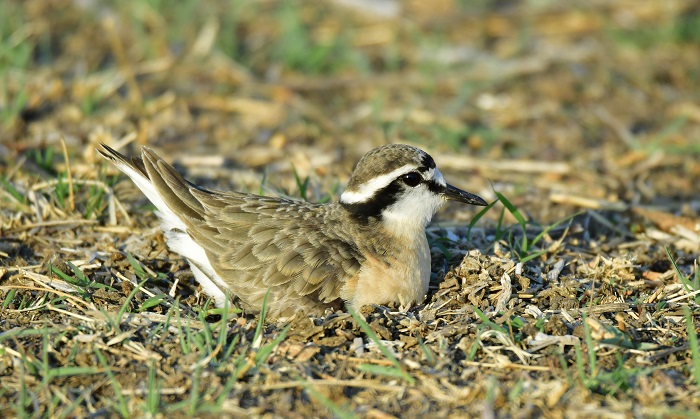
Loch Lomond, Free State
Photo by Kevin Nel
If the incubating bird leaves the nest during the day they will partially cover the exposed eggs and hatchlings by kicking sand or other loose material over the nest, and uncovers them upon returning. During hot weather the incubating bird may crouch over the eggs and hatchlings to shade them, sometimes first soaking the belly feathers in water to further cool the eggs.
In defence of their young the adults will perform distraction displays such as ‘false brooding’ and ‘injury feigning’, to draw the predators attention away from the young or eggs.
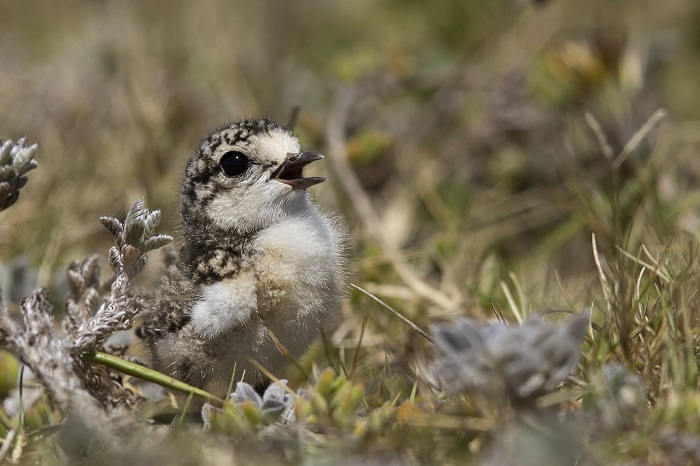
St. Francis Bay area, Eastern Cape
Photo by Desire Darling
Newly hatched young are precocial and are covered in down. They are partly brooded for the first 24 hours and do not feed, they then leave the nest and forage for themselves under parental supervision. The young are fully grown at around 60 days or so.
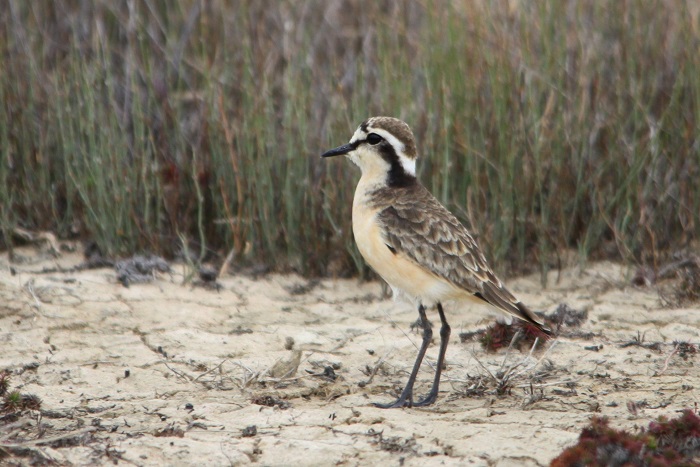
Nuwejaars Wetland Special Management Area, Western Cape
Photo by Keir Lynch
Further Resources
Species text from the first Southern African Bird Atlas Project (SABAP1), 1997.
The use of photographs by Colin Summersgill, Desire Darling, Gerald Wingate, Johan Heyns, John Todd, Keir Lynch, Kevin Nel, Malcolm Robinson, Tino Herselman and Tony Archer is acknowledged.
Virtual Museum (BirdPix > Search VM > By Scientific or Common Name).
Other common names: Geelborsstrandkiewiet (Afrikaans); Herdersplevier (Dutch); Pluvier pâtre (French); Hirtenregenpfeifer (German); Borrelho-do-gado (Portuguese)
Recommended citation format: Tippett RM 2023. Kittlitz’s Plover Charadrius pecuarius. Biodiversity and Development Institute. Available Online at https://thebdi.org/2023/11/20/kittlitzs-plover-charadrius-pecuarius/
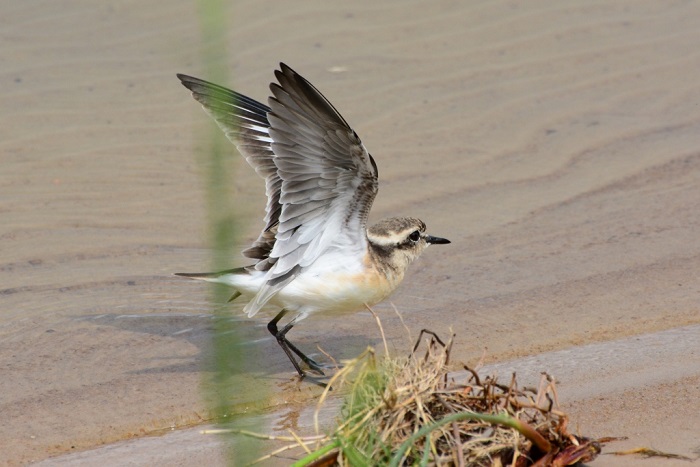
Lake Sibaya, Isimangaliso Wetland Park, KwaZulu-Natal
Photo by Ryan Tippett

